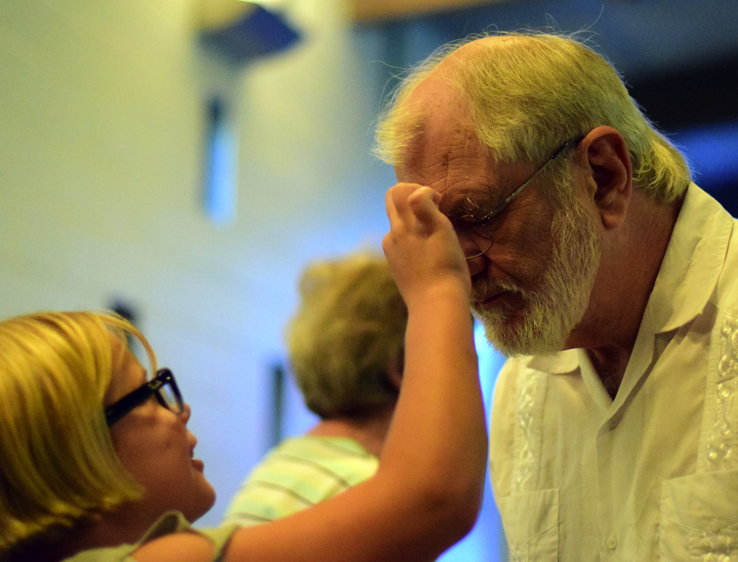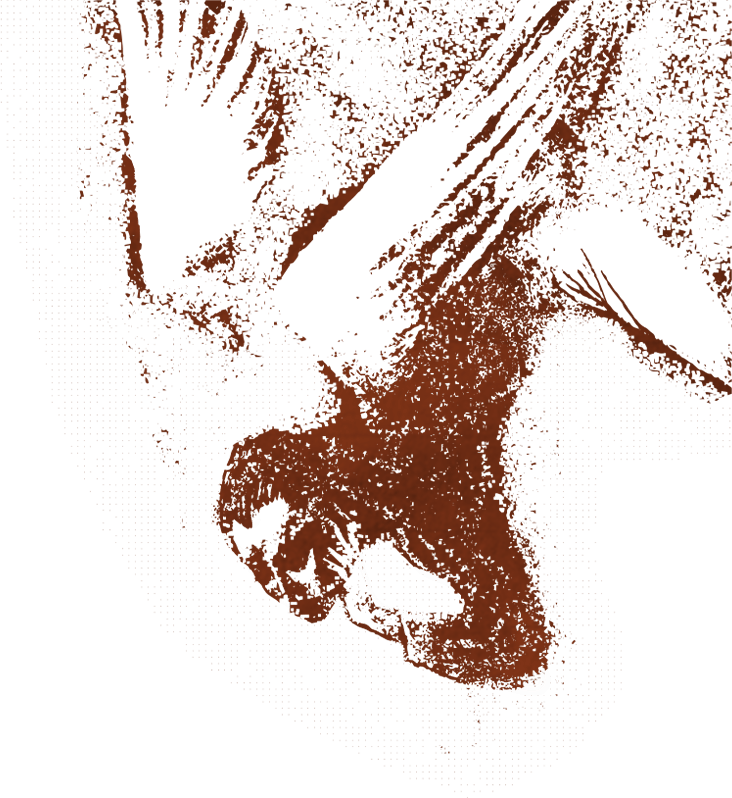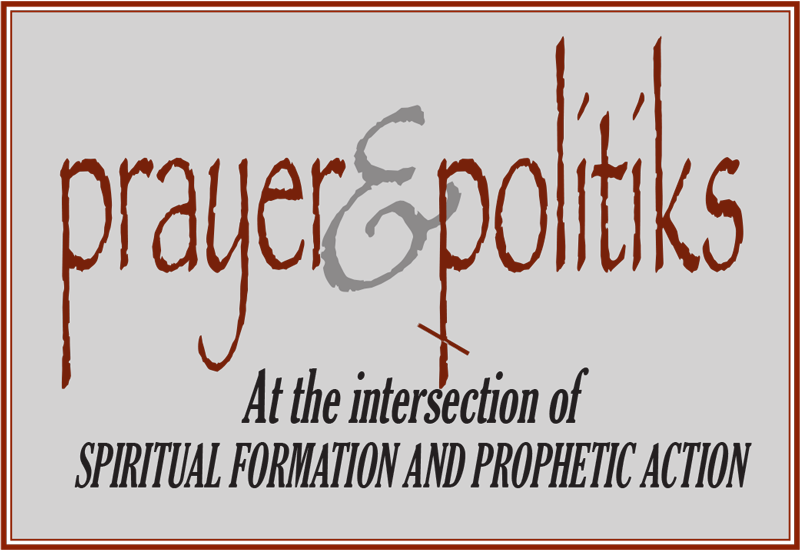by Ken Sehested
When three of us began daydreaming about a starting a new congregation,
during long hikes in the Blue Ridge Mountains in the first year of the new millennium,
one of the things we immediately imagined was worship centered around communion,
including placing the table in the center of our seating. Every Sunday—which is unusual
in Protestant bodies. None of us were raised that way. This tangible ritual act—of
re-membering in the midst of a dismembered world—is poignantly expressive of our
theological vision.
Moreover, we wanted to do this with bodies in motion, as an act of intentionality,
requiring each to stand, to walk, to mingle in random, status-scrambling order with
others, encircling a round table—with the offering plate right there on the table
sharing space with the cup and homemade Host, along with hand-picked flowers, one
or more candles burning in remembrance of those not present and, on occasion,
pastoral letters of encouragem ent or prophetic challenges issued from the congregation
ent or prophetic challenges issued from the congregation
and signed by all so willing.
Read more ›




 ent or prophetic challenges issued from the congregation
ent or prophetic challenges issued from the congregation